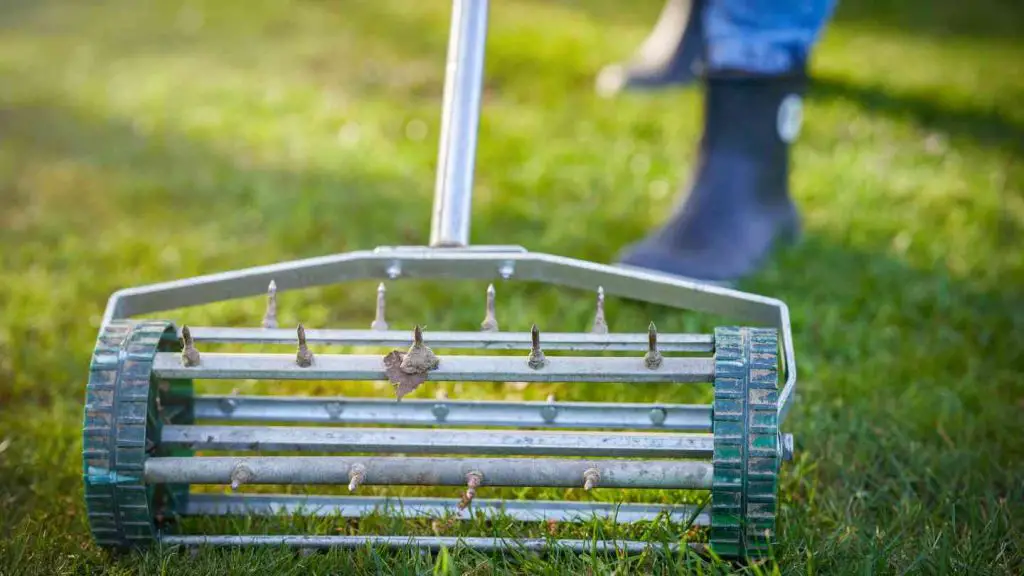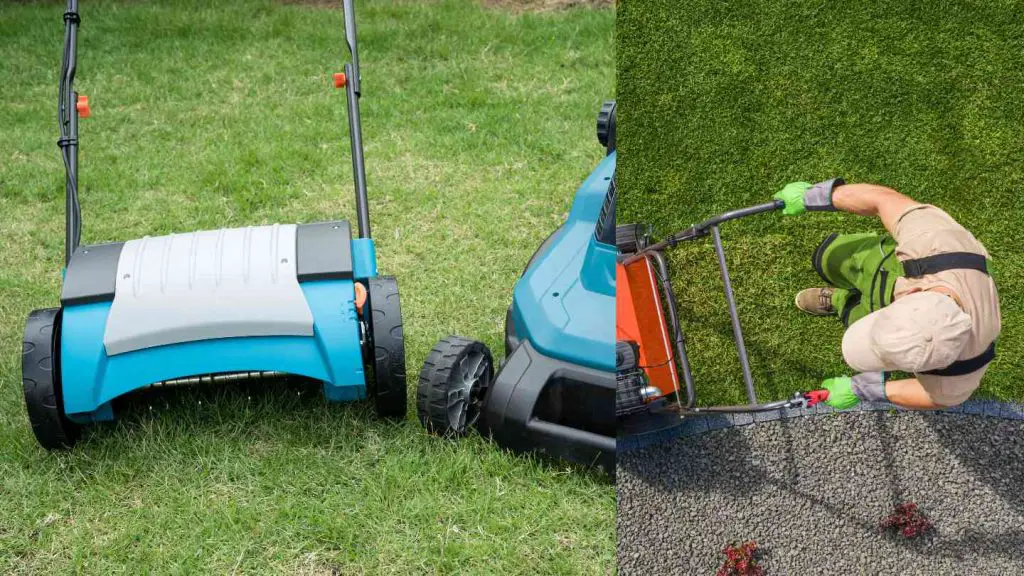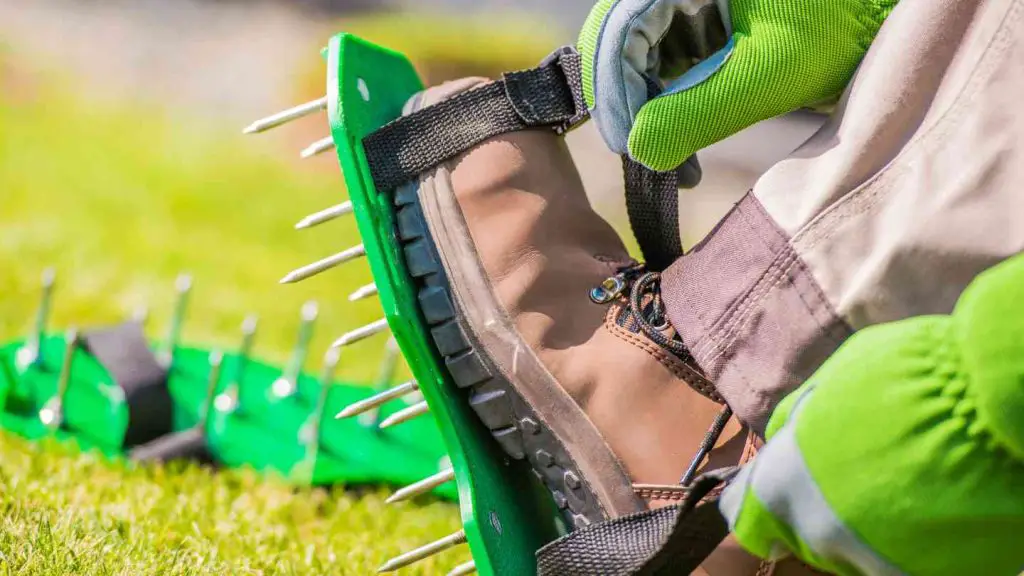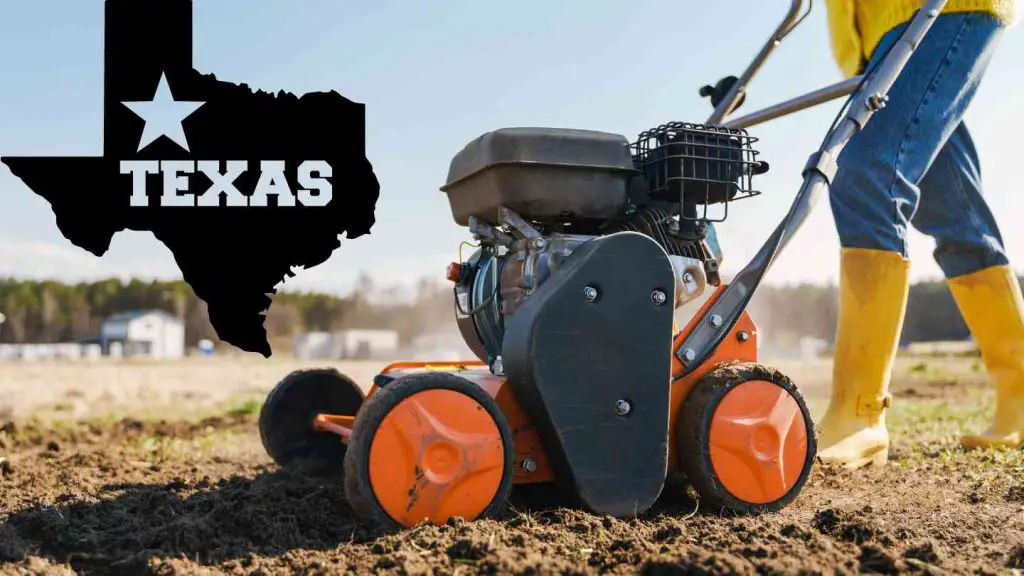Aeration is a crucial lawn care practice that ensures your grass remains healthy and vibrant by allowing air, water, and nutrients to penetrate the soil more effectively.
In Texas, where soil types and weather conditions vary significantly across the state, knowing the optimal time to aerate your lawn is essential for achieving the best results. This guide will explore the best times to aerate your lawn in Texas, considering the different climates and grass types prevalent in the region.
Also read: What to Do with a Large Backyard: 5 Ideas We Recommend
Understanding Lawn Aeration

Before diving into the best time to aerate a lawn in Texas, it’s important to understand what lawn aeration involves and why it’s beneficial. Aeration is the process of creating small holes in your lawn to alleviate soil compaction, allowing essential nutrients, air, and water to reach the grassroots. This process can help improve drainage, reduce thatch build-up, and promote healthier, more resilient grass.
The Best Time to Aerate A Lawn In Texas
So when is best to aerate your lawn if you live in Texas? There’s no straight forward answer, but we made a category of the weather and regions in Texas to help you make the best choice.
Warm-Season vs. Cool-Season Grasses
Texas lawns typically feature warm-season grasses such as Bermudagrass, Zoysiagrass, and St. Augustine, with some areas in the Panhandle and North Texas also having cool-season grasses like Fescue. The type of grass you have largely determines the best aeration period:
Warm-Season Grasses
For warm-season grasses, the active growth period is from late spring through summer. The ideal time for aeration is during their peak growth phase, which in Texas is generally from May to September. Aerating in this window ensures the grass can recover quickly and fill in any open spaces created by the aeration process.
Cool-Season Grasses
Cool-season grasses, which might be found in the northern parts of Texas, have their growth spurts in the fall and early spring. For these types of grass, the best aeration period is during the fall, as it prepares the lawn for vigorous growth in the spring.
Regional Considerations

North Texas
In North Texas, including the Dallas-Fort Worth area, lawns can benefit from aeration in both the spring and fall due to the region’s distinct weather patterns and soil conditions. Spring aeration helps prepare the soil for the growing season, while fall aeration supports root development before the grass goes dormant.
Central and South Texas
For areas in Central and South Texas, where the climate is warmer, aeration is most beneficial when done in late spring to early summer. This timing helps lawns recover from any winter stress and prepares them for the hot summer months.
Austin and Surrounding Areas
In Austin and its surrounding areas, the recommendation aligns with that for Central and South Texas, with late spring to early summer being the optimal aeration period. This timing ensures that the grass is actively growing and can quickly utilize the benefits of aeration.
How Often Should You Aerate Your Lawn in Texas?
In Texas, the frequency of lawn aeration largely depends on the type of grass and soil composition of your lawn. For lawns with heavy clay soil, which is common in many parts of Texas, it is recommended to aerate once a year.
This is because clay soil tends to compact more easily, which can restrict the flow of air, water, and nutrients to the grassroots. For lawns with loam or sandy soil, aeration can be done every two to three years, especially if the grass is healthy and well-maintained.
Best Practices When Aerating a Lawn in Texas

Timing
- Warm-Season Grasses: For warm-season grasses such as Bermudagrass, Zoysiagrass, and St. Augustine, the best time to aerate is during their active growth period, which is typically from late spring to early summer.
- Cool-Season Grasses: If you have cool-season grasses like Fescue, the ideal time for aeration is during the fall, as this prepares the lawn for vigorous growth in the spring.
Soil Moisture
- Aerate when the soil is moist but not saturated, as moist soil allows the tines of the aerator to penetrate more deeply and effectively. Watering the lawn one inch deep one day prior to aerating can achieve the correct moisture balance.
Equipment
- Use a core aerator rather than a spike aerator. Core aerators remove plugs of soil, which is more effective for alleviating soil compaction.
- Flag sprinkler heads and any shallow lines before aerating to avoid damaging your irrigation system.
Post-Aeration Care
- Leave the soil plugs on the lawn to decompose naturally, as they contain soil microorganisms that help break down thatch.
- After aerating, it’s an excellent time to fertilize and oversee your lawn, as the open soil will be more receptive to new seeds and nutrients.
Professional Services
- Consider hiring a professional lawn care service for aeration, especially if you are unfamiliar with the process or do not have the necessary equipment. Professionals can ensure the job is done correctly and can also provide additional lawn care services.
Annual Maintenance
- Even if aeration is not required annually for certain soil types, it’s important to assess your lawn each year to determine if aeration is needed. Signs that your lawn may need aeration include water puddling, thin or patchy grass, and difficulty penetrating the soil with a screwdriver.
Tools Needed for Lawn Aeration

The tools required for lawn aeration depend on the size of your lawn and the type of aeration you plan to perform. Here are the primary tools you might need:
- Manual Core Aerator: Ideal for small to medium-sized lawns. This tool removes plugs of soil from the lawn, allowing air, water, and nutrients to penetrate the soil more effectively.
Check it on Amazon - Manual Spike Aerator: Another option for smaller lawns, though less effective than core aerators as they can further compact the soil around the holes.
Check it on Amazon - Motorized Mechanical Aerators: Best for larger lawns. These machines can be rented and make the job quicker and more efficient by automatically removing soil plugs as you push them across the lawn.
Check it on Amazon - Tow-Behind Aerators: Suitable for very large lawns or fields, these aerators attach to a lawn tractor or mower and aerate the soil as you drive.
Check it on Amazon - Garden Hose and Lawn Sprinkler: To moisten the lawn before aeration, making the soil easier to penetrate.
Check it on Amazon - Irrigation Flags: To mark the locations of sprinkler heads or other obstacles in your lawn to avoid damaging them during aeration.
Check it on Amazon
How Deep to Aerate Your Lawn
The depth of aeration is crucial for its effectiveness. The general recommendation is to aerate the lawn to a depth of 2-3 inches. This depth allows for sufficient air, water, and nutrient penetration and encourages deeper root growth. The plugs (or cores) removed should be approximately 0.5 to 0.75 inches in diameter, set 2-3 inches apart.
Common Mistakes to Avoid
When aerating your lawn in Texas, there are several common mistakes you should be aware of to avoid damaging your lawn:
- Aerating at the Wrong Time: The best time to aerate a lawn in Texas is during the growing season of the grass type you have. For warm-season grasses, late spring to early summer is ideal. For cool-season grasses, early spring or fall is best.
- Not Watering the Lawn Before Aeration: The soil should be moist but not saturated to make aeration easier and more effective. Water your lawn one or two days before aerating.
- Using the Wrong Aeration Method: Opting for spike aeration over core aeration can lead to further soil compaction rather than alleviating it. Core aeration is generally recommended for most lawns.
- Ignoring Lawn Markings: Failing to mark irrigation systems, utility lines, or other obstacles can lead to damage during the aeration process
. - Overlooking Post-Aeration Care: After aeration, it’s important to leave the soil plugs on the lawn to decompose naturally and consider overseeding or fertilizing to encourage healthy growth
Identifying the Need for Lawn Aeration

Determining whether your lawn needs aeration involves looking for specific signs that indicate soil compaction or thatch buildup. Here are some indicators that your lawn may benefit from aeration:
- Water Runoff: If water tends to run off your lawn rather than soaking in, it could be a sign of compaction.
- Difficulty Penetrating the Soil: If it’s hard to push a screwdriver or soil probe into the ground, your soil may be too compacted.
- Thin or Patchy Grass: Lawns that struggle to grow or have bare spots might be suffering from soil compaction or excessive thatch.
- Heavy Foot Traffic: Areas with frequent foot traffic, like play areas or paths, are more likely to become compacted over time.
- Thatch: If your lawn has more than half an inch of thatch, aeration can help break it down and improve the overall health of your lawn.
- Spongy Feel: A lawn that feels spongy as you walk on it may have a thick thatch layer, which aeration can help alleviate.
Aeration After Fertilization
It is generally recommended to aerate your lawn before applying fertilizer. Aeration can improve the soil’s ability to absorb the nutrients provided by the fertilizer, making it more effective.
However, if you have recently fertilized your lawn, it’s best to wait a few weeks before aerating to allow the fertilizer to be absorbed by the grass roots and to avoid disturbing the nutrient distribution in the soil.If you find yourself in a situation where you’ve already fertilized and then decide to aerate, consider the following:
- Type of Fertilizer: If you used a slow-release fertilizer, it might be better to wait until the next aeration cycle to avoid disrupting the gradual nutrient release.
- Lawn Health: If your lawn is showing signs of distress that could be alleviated by aeration, such as water pooling or compaction, it may be beneficial to proceed with aeration despite recent fertilization.
- Time Since Fertilization: If it has been several weeks since you fertilized, the nutrients have likely been absorbed, and aeration can be performed without significant impact.
In any case, it’s important to assess the specific conditions of your lawn and consider the timing of both fertilization and aeration to ensure the best results for your lawn’s health.
Natural Ways To Aerate a Lawn In Texas

- Manual Core Aeration: Using a manual core aerator, which removes plugs of soil from the lawn, is a natural and effective way to aerate. This tool is operated by hand and is best used when the soil is moist.
- DIY Aerator Shoes: You can create your own aerator shoes with thick boards and nails. By strapping these homemade devices to your shoes, you can aerate your lawn by simply walking over it.
- Repurposed Oil Drum Aerator: An old oil drum can be converted into a DIY aerator by adding spikes and a handle. This allows you to push the aerator through your yard to aerate the soil.
- DIY Concrete Aerator: A homemade aerator can be constructed using concrete and nails to create the spikes. This push aerator can be manually operated to aerate your lawn.
- Plexiglass Lawn Aerator Sandals: Similar to aerator shoes, sandals made from plexiglass with attached spikes can be used to aerate the lawn by walking over it.
- Repurposed Rake Lawn Aerator: An old rake can be modified to serve as a simple aerating tool. This method is more about using what you have on hand to create small openings in the soil.
- Avoiding Soil Compaction: Preventing compaction in the first place is a natural way to maintain aeration. This can be done by avoiding excessive foot traffic and heavy equipment on the lawn.
- Encouraging Earthworm Activity: Earthworms naturally aerate the soil as they move through it. Encouraging their presence by maintaining organic matter on the lawn can help keep the soil aerated.
- Mulching: Applying mulch to the lawn can help prevent soil compaction by protecting the soil from heavy rains and reducing the need for foot traffic for maintenance.
- Proper Mowing and Watering: Regular lawn maintenance, including proper mowing and watering, can help maintain soil structure and reduce the need for frequent aeration.
These natural methods can be effective for small to medium-sized lawns or for those looking to avoid the use of gas-powered equipment. They can also be more environmentally friendly and cost-effective compared to renting or purchasing mechanical aerators.
Final Thoughts
Aerating your Texas lawn at the right time can significantly impact its health and appearance. For warm-season grasses prevalent across most of the state, aim for the late spring to early summer window.
If you have cool-season grasses in the northern regions, fall is your best bet. Always consider your specific lawn’s condition and the local climate before scheduling aeration.






